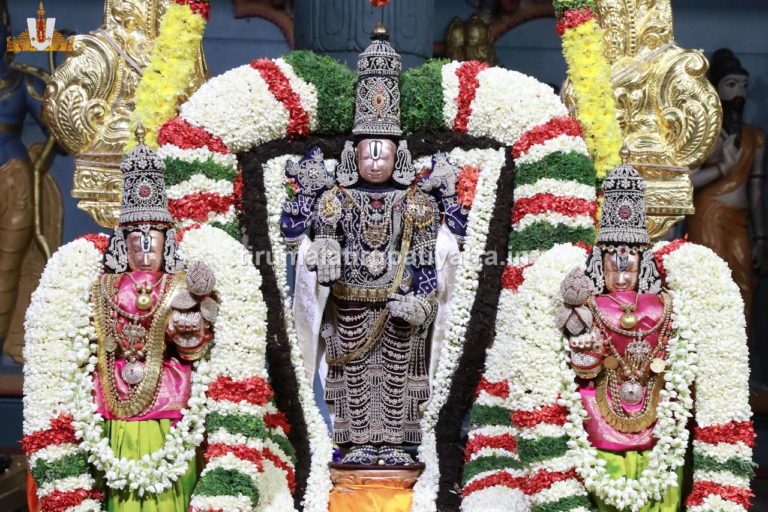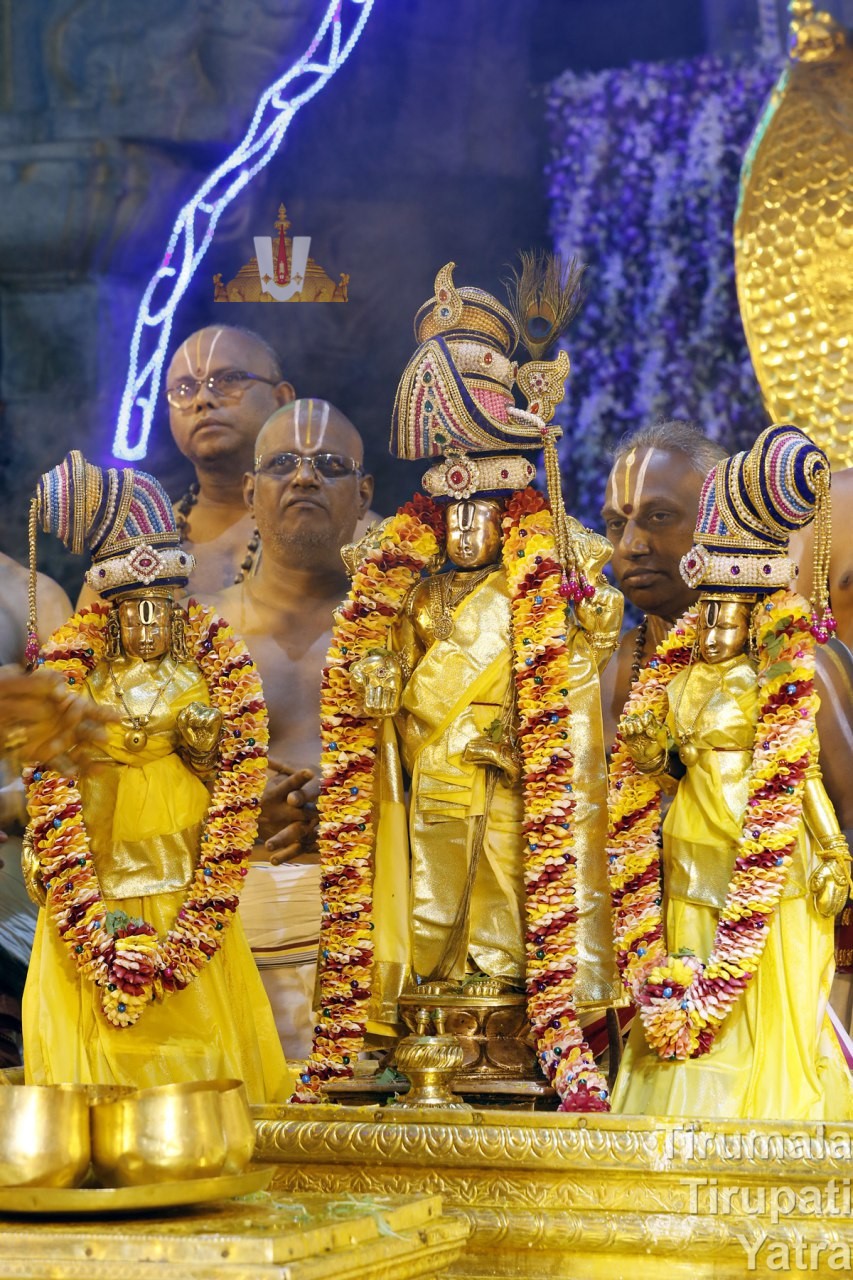Table of Contents
ToggleJyeshtabhishekam - Abhideyaka Abhisheka
Jyeshtabhisheka or Abhideyaka abhisheka is an annual festival with immense significance attached to it. It is a ritual that is performed for the sake of preserving the most valuable processional deity of Lord Venkateswara, Lord Malayappa along with the deities of Goddesses Sridevi and Bhudevi.
The ancient icons are made of panchaloha (an alloy of brass, gold, copper, silver, and lead) and are at least 800 years old. Hence it is very important that these invaluable deities be preserved very carefully.
The Vaikhanasa text, PrakeernAdhikAra prescribes a very important ritual, Abhideyaka Abhisheka. The golden armor that is always present on Malayappa is removed very carefully on this occasion. It is the only time when Malayappa can be seen in His truest form, without the ornamental armor.

Jyeshta star
According to Sage Bhrighu, the auspicious time for the ritualistic anointing of the sacred icon of Lord Vishnu with a specially formulated herbal preparation called ‘Visesha Sugandha Tailam’ is to be performed on the full moon day (Purnima) during the month of Jyeshta, in the constellation of the Jyeshta star.
As part of this festival the existing gold armour which affixed on the holy Tirumeni of the utsava icons of Lord Malayappa Swami and the consorts Sridevi and Bhudevi, are to be removed 15 days before the commencement of the festival.
If there are any repairs to be made to this Kavacham, the services of a qualified traditional jeweller (Sthapati) is made for the same.
To protect and preserve the holy icons from ravages of everyday worship arising due to Abhishekams, the Kavachams (holy armour) are to be adorned after duly performing all the cleansing and purifying rituals according to Sri Vaikhanasa Bhagavachhastram.
Snapana Tirumanjanam
The protective golden armor that always adorns Malayappa, Sridevi, and Bhudevi deities are ceremoniously extracted a fortnight before the actual ritual.
During the ceremony, all three deities are brought onto the special dais called the ‘KalyanaMandapam’, which lies within the SampangiprAkAram (the second circumambulatory path) of the ancient temple.
A holy bath, comprising 108 silver pots filled with holy contents (Kushodakam, Ratnodakam, Haridrodakam, Ksheerodakam, etc, 9 sets of 12 different dravyams) are offered amidst divine chantings of the Panchasuktas.
The divine event is rightly termed as ‘Ashtottara Sata Kalasha Snapana Tirumanjanam’.

